Analysis of a Precipitation System that Exists above Freezing Level Using a Multi-Parameter Phased Array Weather Radar
Abstract
1. Introduction
2. Observation and Analysis Method of MP-PAWR Data
3. Environmental Conditions
4. MP-PAWR Analysis Results
4.1. General Characteristics
4.2. Time Series
4.3. VAD Analysis
5. Discussion
5.1. Precipitation Particle Formation Process
5.2. Estimation of Vertical Air Motion
5.3. Precipitation Formation Mechanism
6. Conclusions
Author Contributions
Funding
Acknowledgments
Conflicts of Interest
References
- Zrnic, D.S.; Kimpel, J.F.; Forsyth, D.E.; Shapiro, A.; Crain, G.; Ferek, R.; Heimmer, J.; Benner, W.; McNellis, F.T.; Vogt, R.J. Agile-Beam Phased Array Radar for Weather Observations. Bull. Am. Meteorol. Soc. 2007, 88, 1753–1766. [Google Scholar] [CrossRef]
- Isom, B.; Palmer, R.; Kelley, R.; Meier, J.; Bodine, D.; Yeary, M.; Cheong, B.L.; Zhang, Y.; Yu, T.Y.; Biggerstaff, M. The Atmospheric Imaging Radar (AIR) for High-Resolution Observations of Severe Weather; IEEE RadarCon (RADAR): Kansas City, MO, USA, 2011; pp. 627–632. [Google Scholar] [CrossRef]
- Borowska, L.; Zhang, G.; Zrnić, D.S. Considerations for Oversampling in Azimuth on the Phased Array Weather Radar. J. Atmos. Ocean. Technol. 2015, 32, 1614–1629. [Google Scholar] [CrossRef]
- Yoshikawa, E.; Ushio, T.; Kawasaki, Z.; Yoshida, S.; Morimoto, T.; Mizutani, F.; Wada, M. MMSE Beam Forming on Fast-Scanning Phased Array Weather Radar. IEEE Trans. Geosci. Remote Sens. 2012, 51, 3077–3088. [Google Scholar] [CrossRef]
- Mizutani, F.; Ushio, T.; Yoshikawa, E.; Shimamura, S.; Kikuchi, H.; Wada, M.; Satoh, S.; Iguchi, T. Fast-Scanning Phased-Array Weather Radar with Angular Imaging Technique. IEEE Trans. Geosci. Remote Sens. 2018, 56, 2664–2673. [Google Scholar] [CrossRef]
- Heberling, W.; Frasier, S.J. Evaluation of Phased-Array Weather-Radar Polarimetry at X-band. In Proceedings of the 2018 IEEE Radar Conference (RadarConf18), Oklahoma City, OK, USA, 23–27 April 2018; pp. 851–855. [Google Scholar] [CrossRef]
- Takahashi, N.; Ushio, T.; Nakagawa, K.; Mizutani, F.; Iwanami, K.; Yamaji, A.; Kawagoe, T.; Osada, M.; Ohta, T.; Kawasaki, M. Development of Multi-Parameter Phased Array Weather Radar (MP-PAWR) and Early Detection of Torrential Rainfall and Tornado Risk. J. Disaster Res. 2019, 14, 235–247. [Google Scholar] [CrossRef]
- Haynes, J.M.; Marchand, R.T.; Luo, Z.; Bodas-Salcedo, A.; Stephens, G.L. A Multipurpose Radar Simulation Package: QuickBeam. Bull. Am. Meteorol. Soc. 2007, 88, 1723–1728. [Google Scholar] [CrossRef]
- Evans, E.; Stewart, R.E.; Henson, W.; Saunders, K. On Precipitation and Virga over Three Locations during the 1999–2004 Canadian Prairie Drought. Atmosphere-Ocean 2011, 49, 366–379. [Google Scholar] [CrossRef]
- Wang, Y.; You, Y.; Kulie, M. Global Virga Precipitation Distribution Derived From Three Spaceborne Radars and Its Contribution to the False Radiometer Precipitation Detection. Geophys. Res. Lett. 2018, 45, 4446–4455. [Google Scholar] [CrossRef]
- Raghavan, S. Radar Meteorology; Artech House: Norwood, MA, USA, 1992. [Google Scholar]
- Kouketsu, T.; Uyeda, H.; Ohigashi, T.; Oue, M.; Takeuchi, H.; Shinoda, T.; Tsuboki, K.; Kubo, M.; Muramoto, K.I. A hydrometeor classification method for X-band polarimetric radar: Construction and validation focusing on solid hydrometeors under moist environments. J. Atmos. Ocean. Technol. 2015, 32, 2052–2074. [Google Scholar] [CrossRef]
- Ishihara, M.; Kato, Y.; Abo, T.; Kobayashi, K.; Izumikawa, Y. Characteristics and performance of the operational wind profiler network of the Japan Meteorological Agency. J. Meteor. Soc. Jpn. 2006, 84, 1085–1096. [Google Scholar] [CrossRef]
- Kobayashi, S.; Ota, Y.; Harada, Y.; Ebita, A.; Moriya, M.; Onoda, H.; Onogi, K.; Kamahori, H.; Kobayashi, C.; Endo, H.; et al. The JRA-55 Reanalysis: General specifications and basic characteristics. J. Meteor. Soc. Jpn. 2015, 93, 5–48. [Google Scholar] [CrossRef]
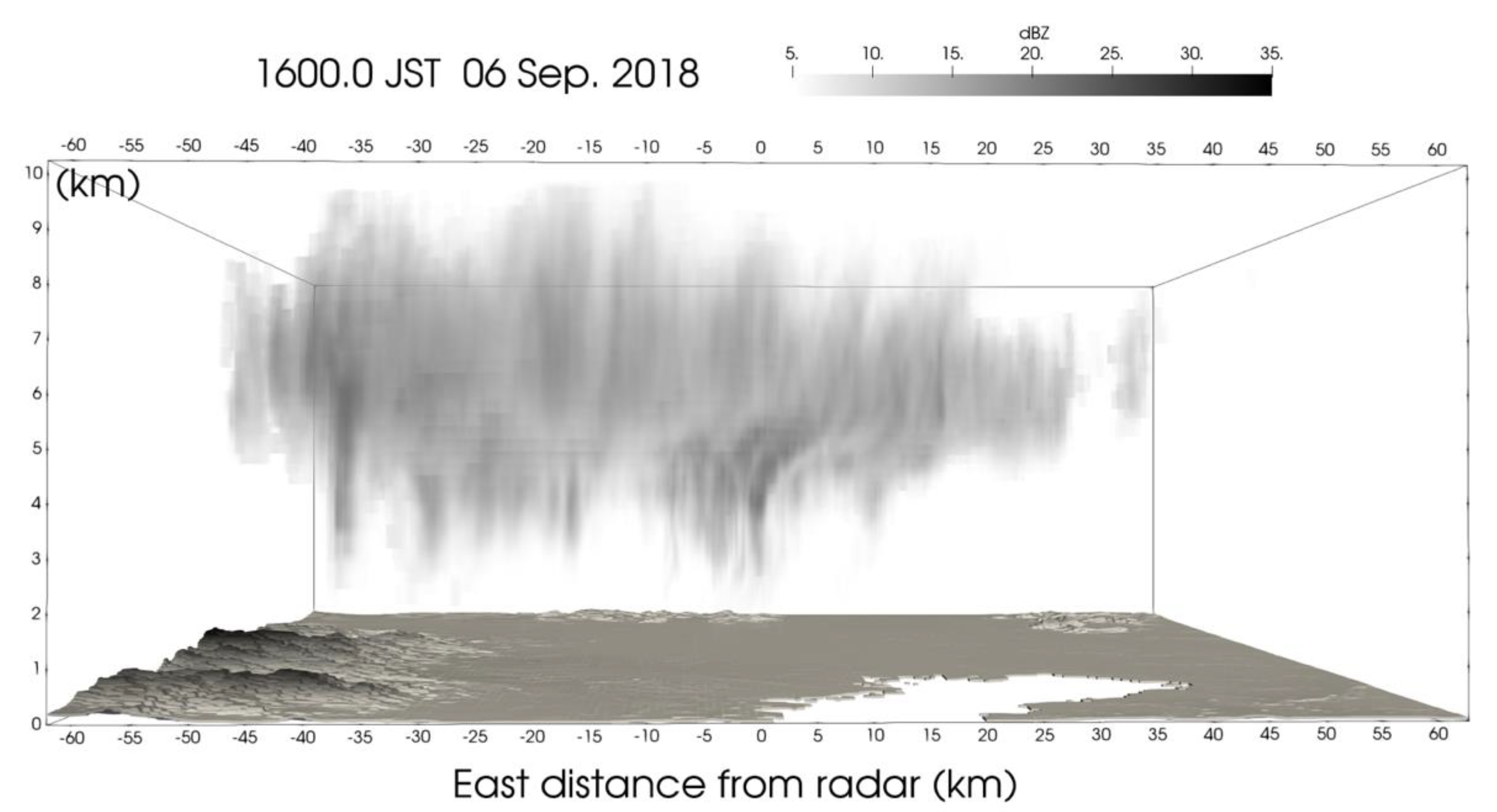
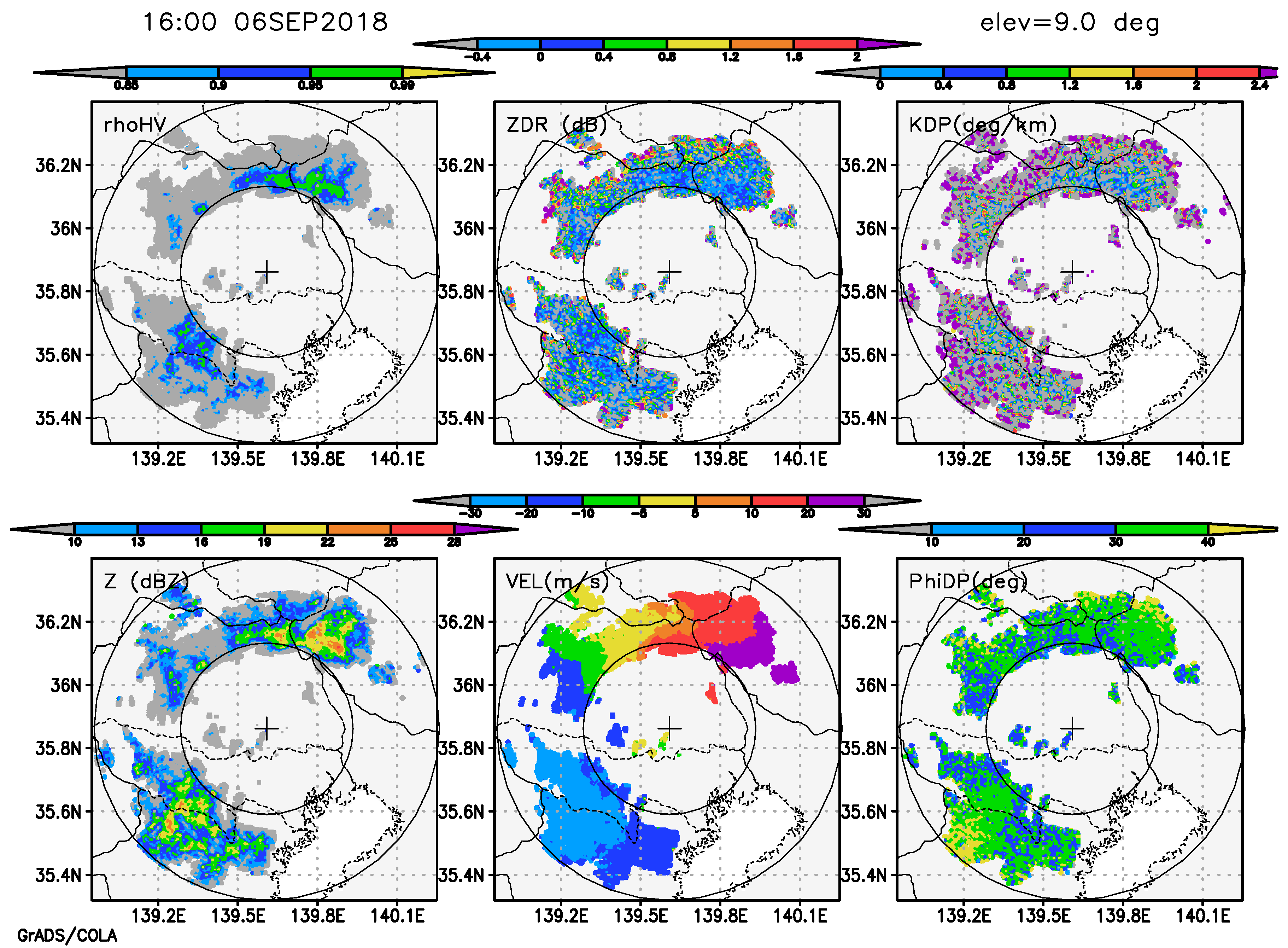
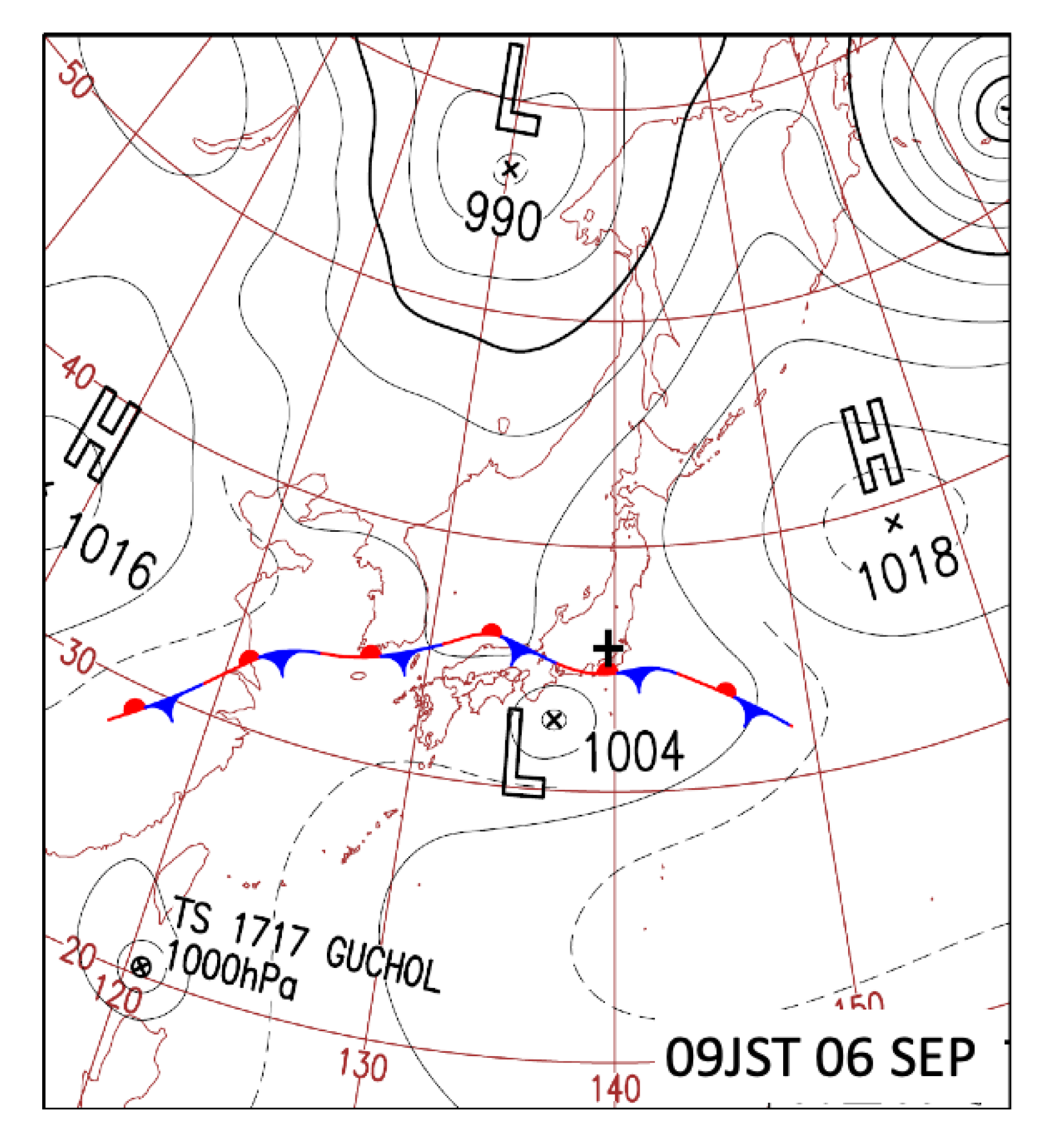
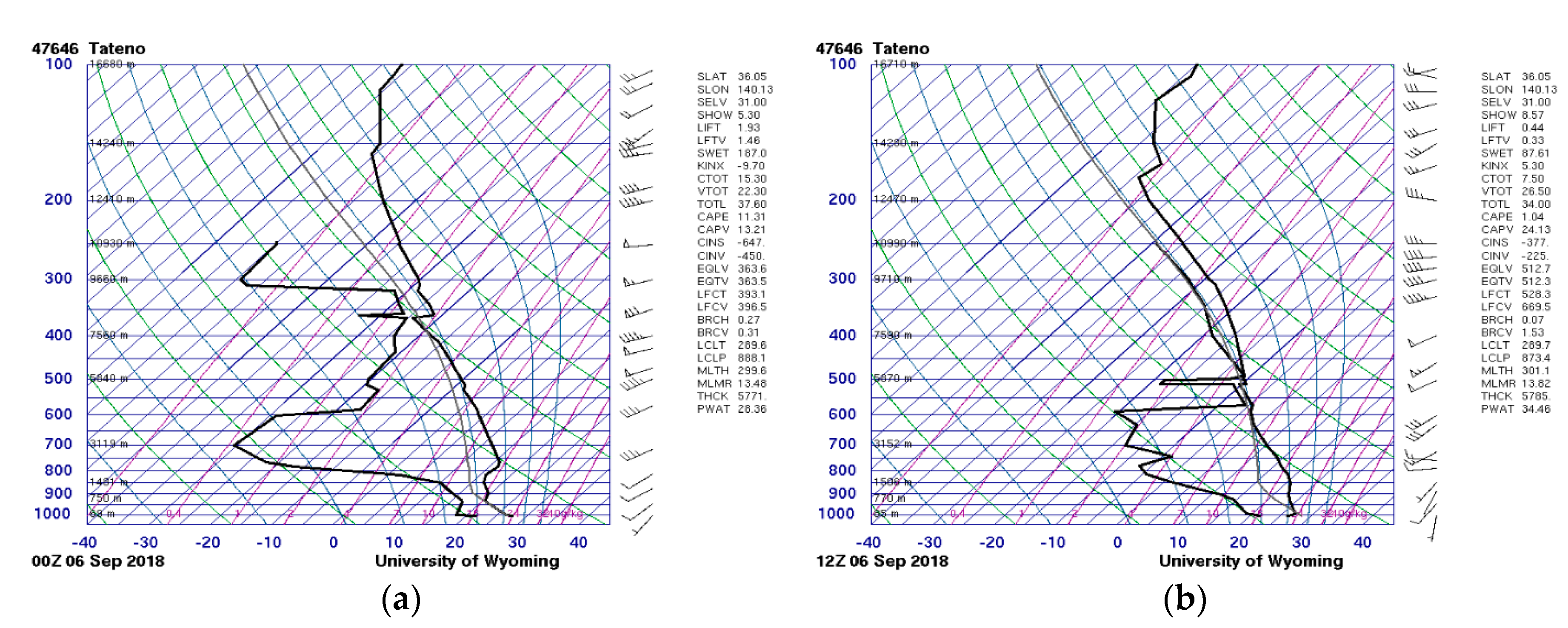
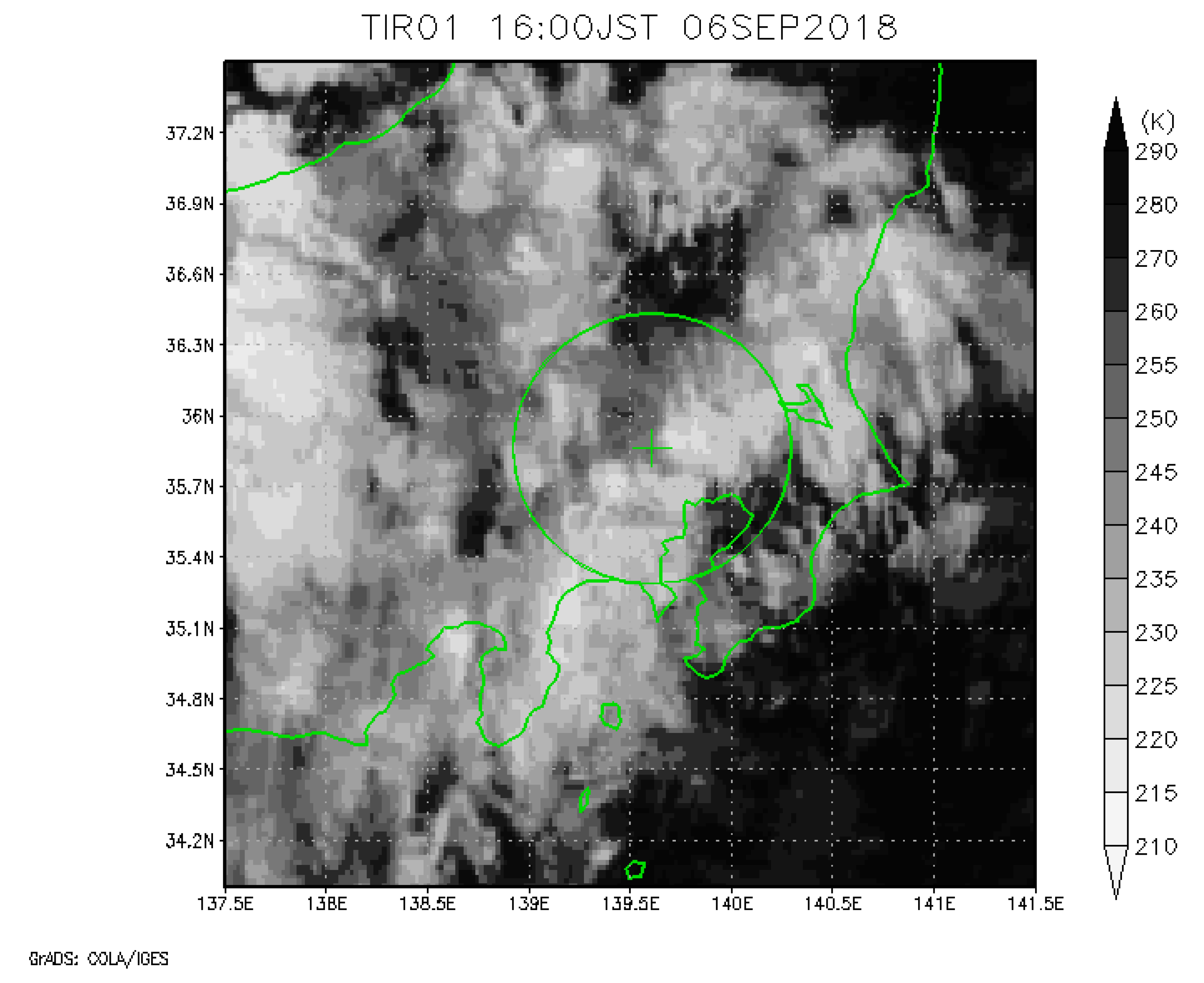
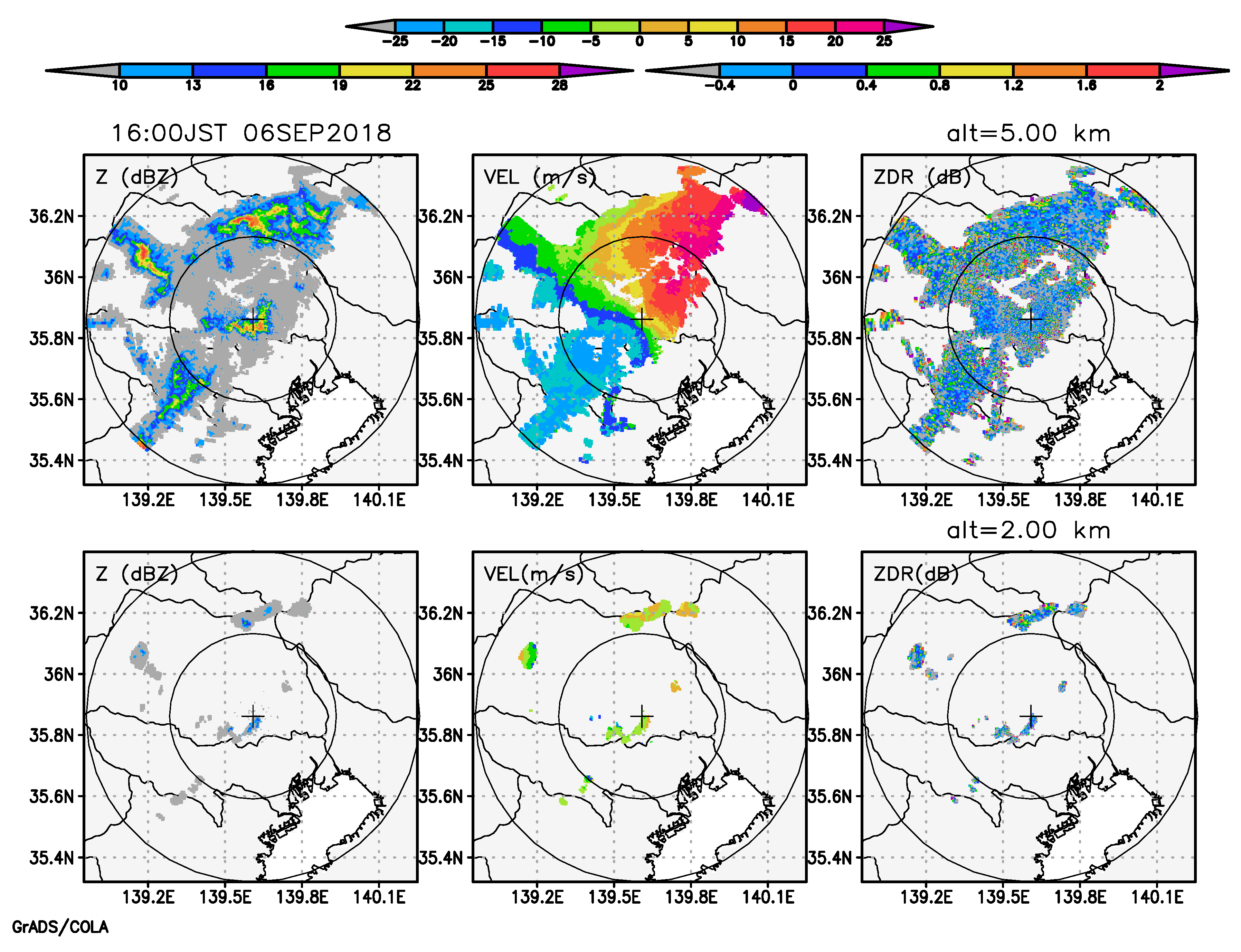
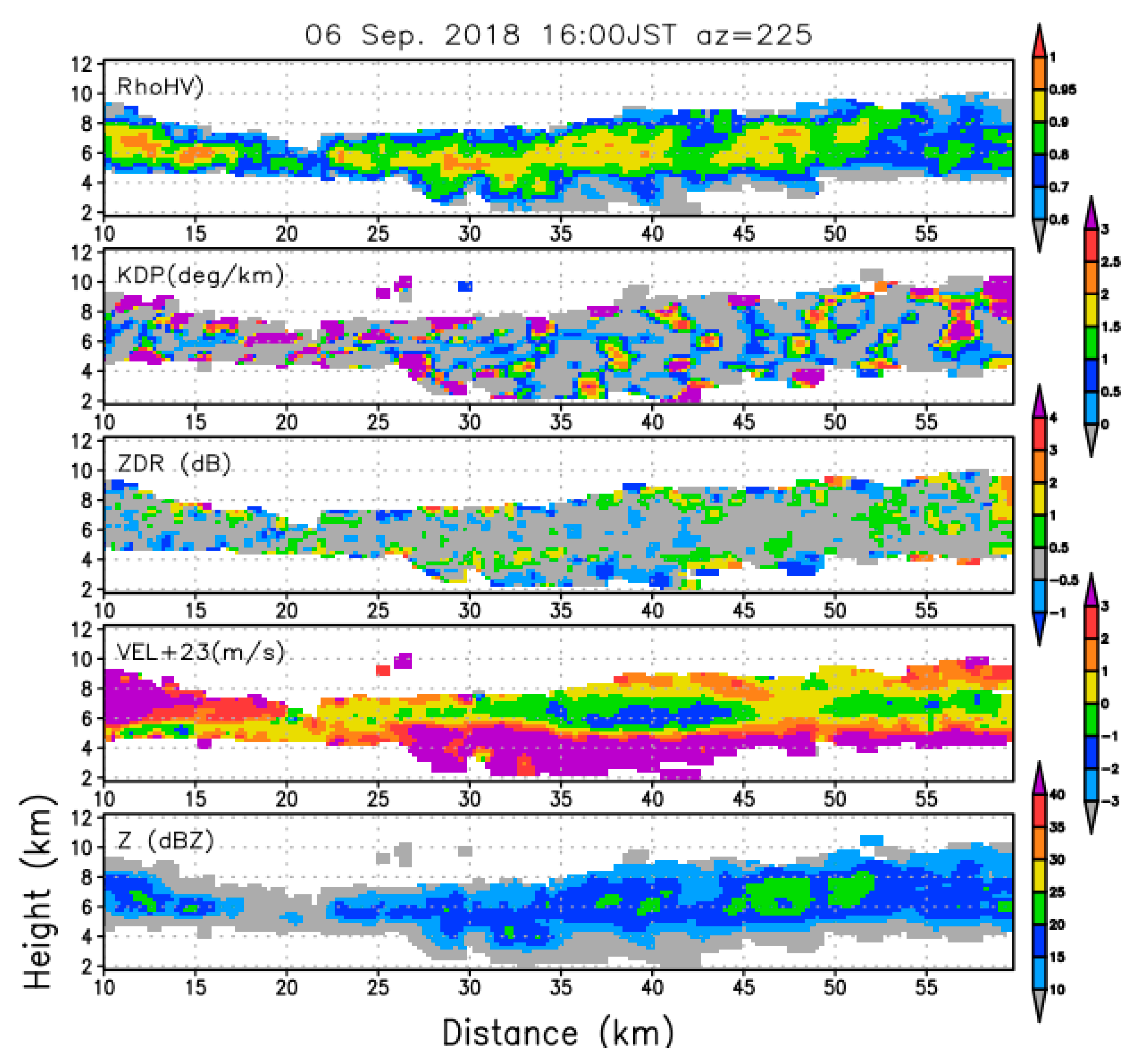
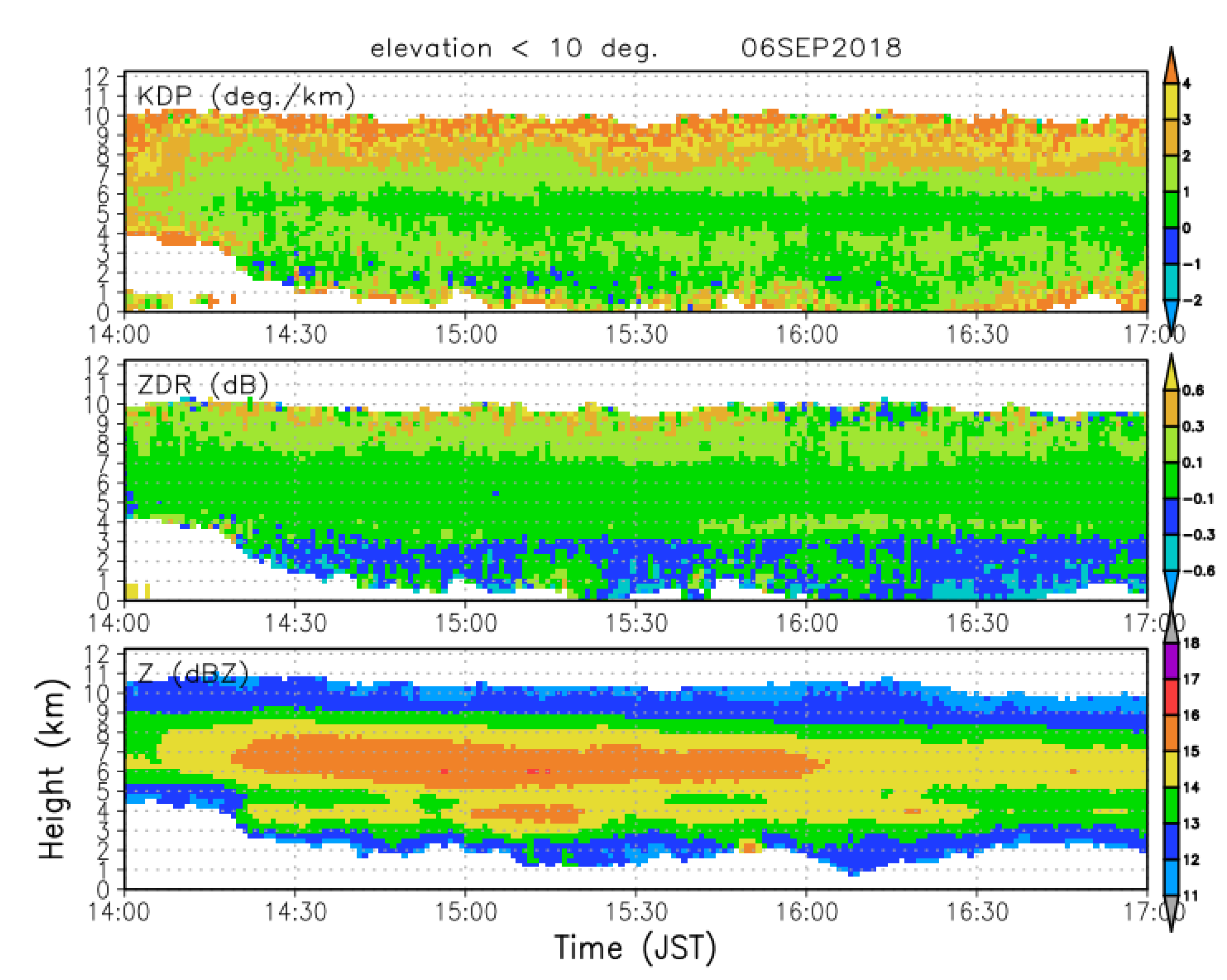
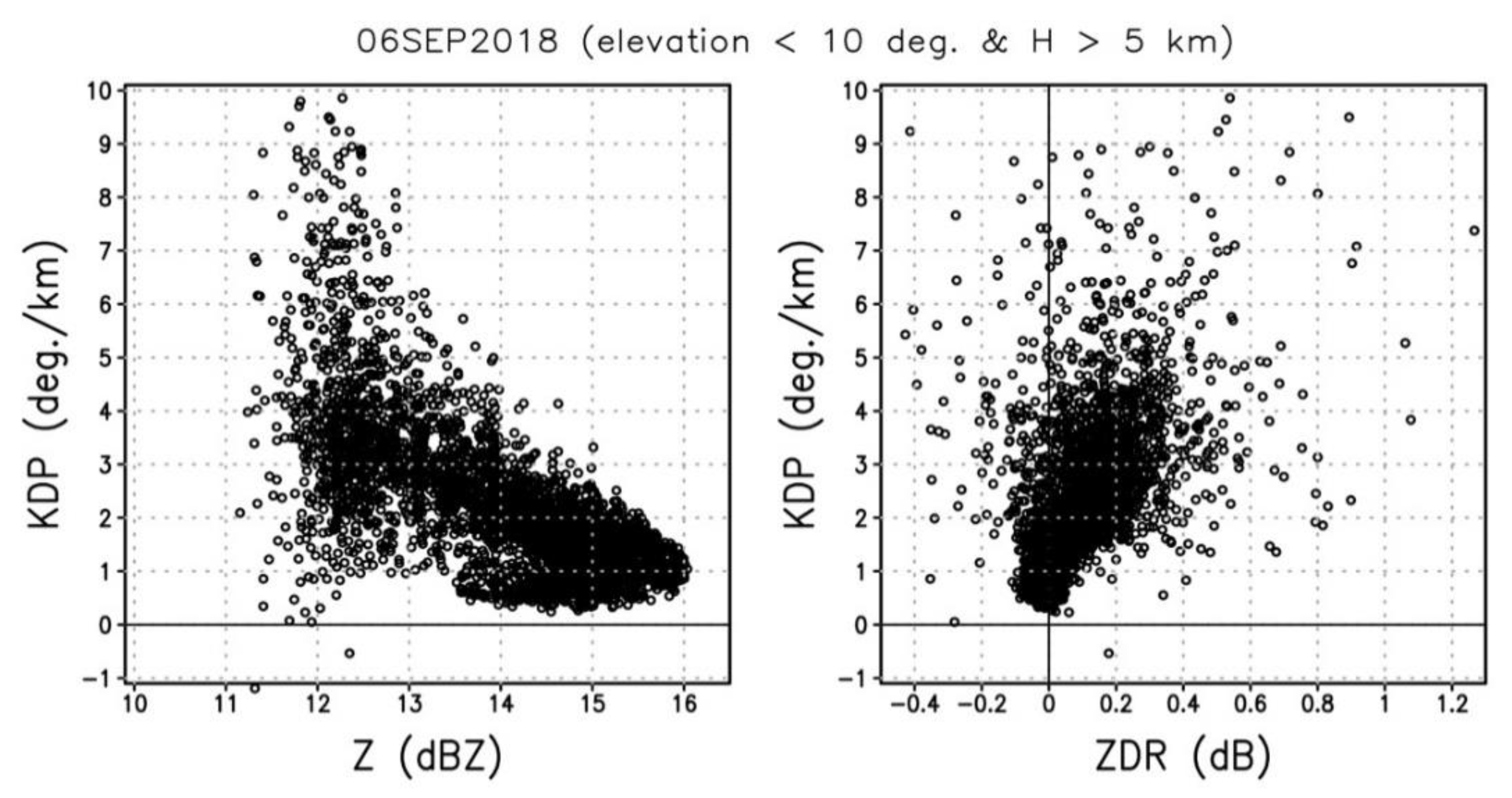
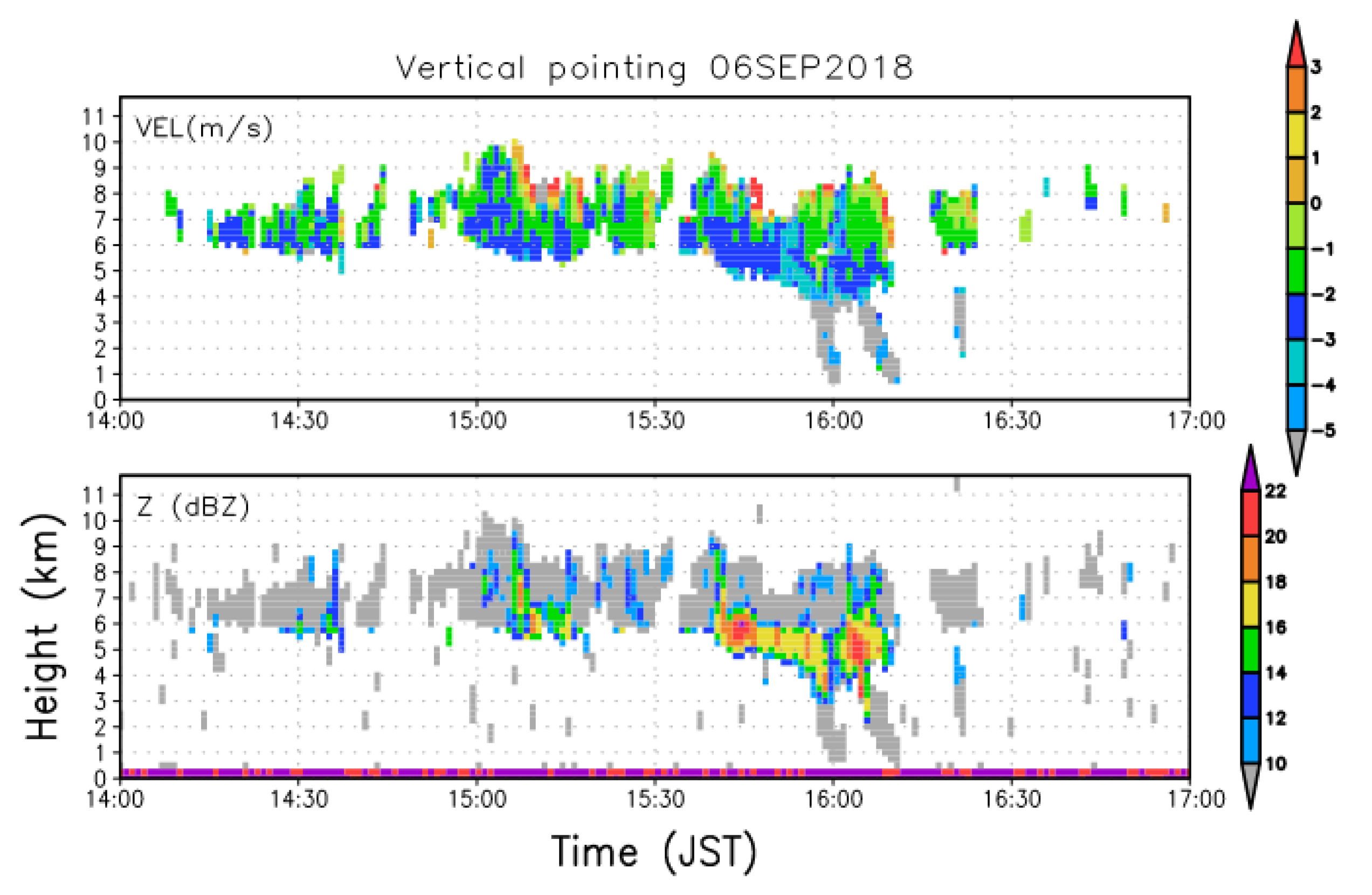
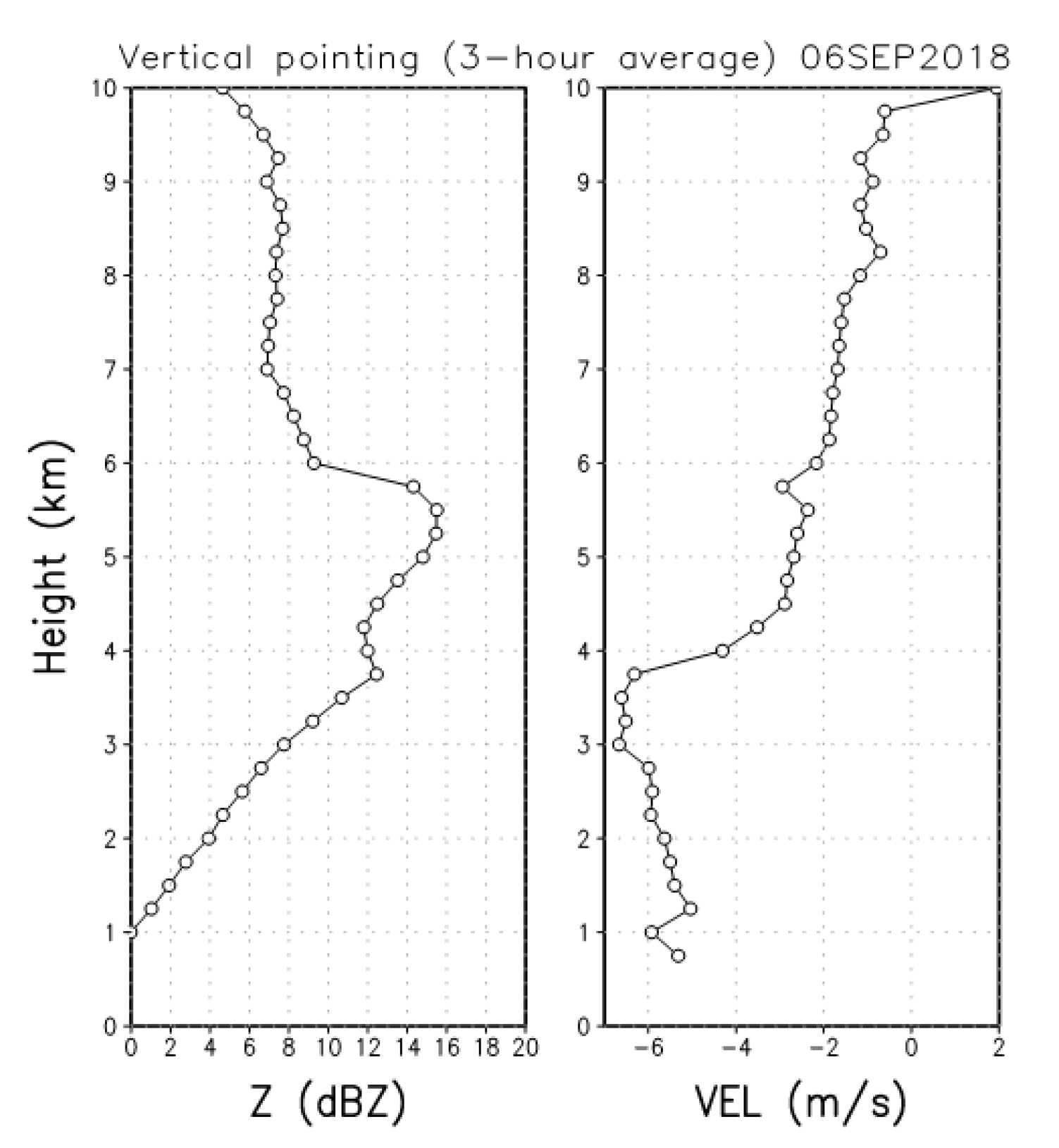
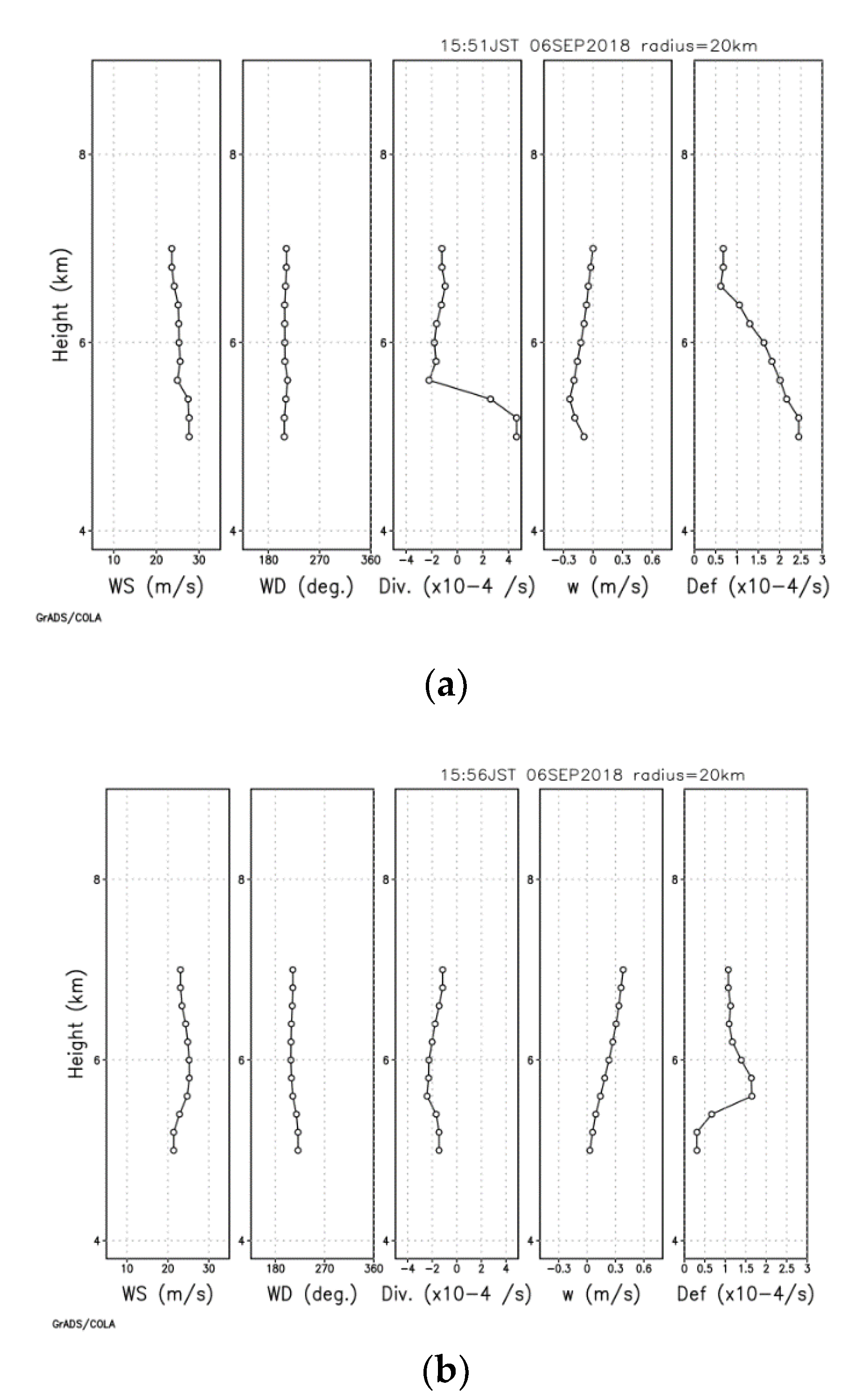
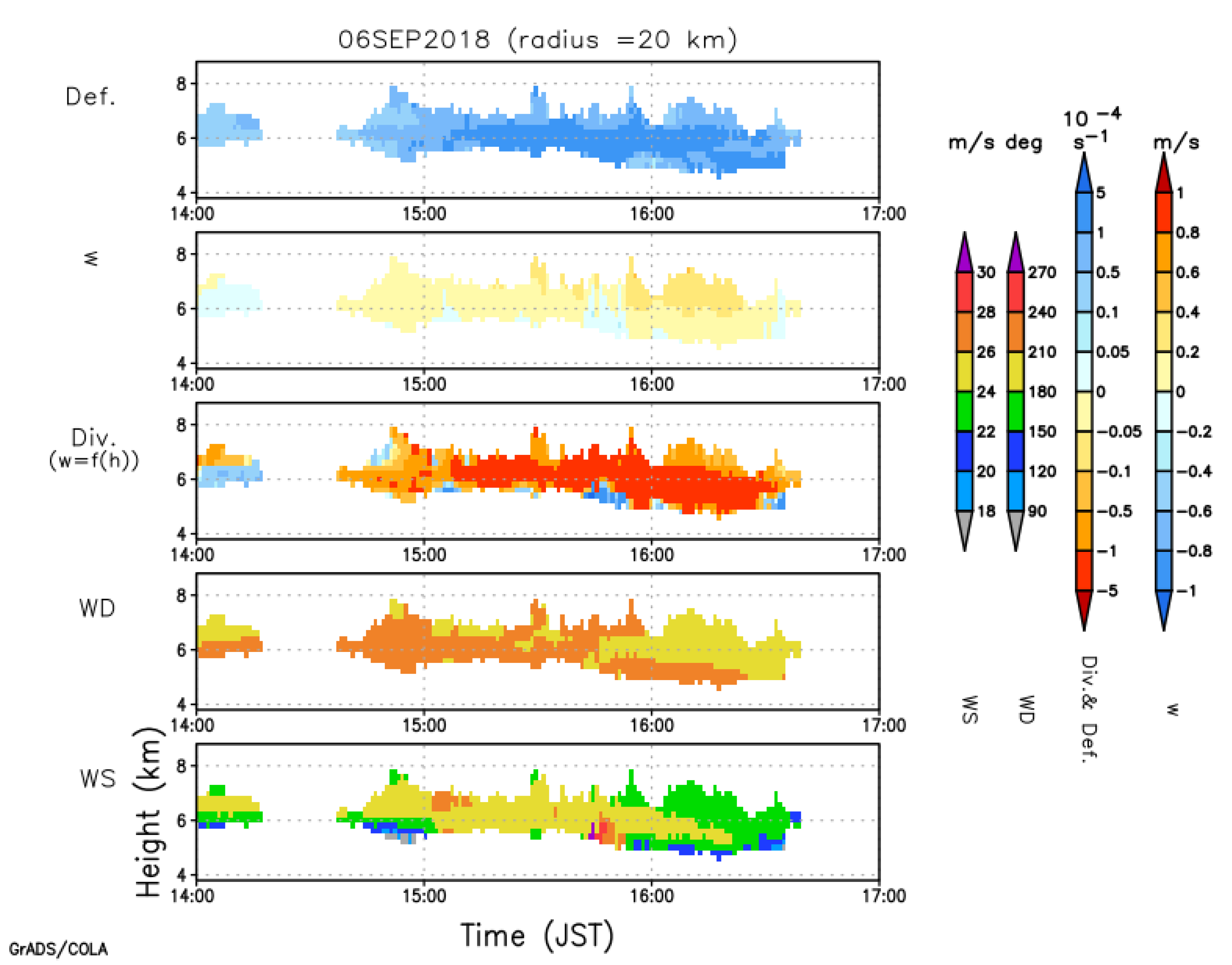
© 2019 by the author. Licensee MDPI, Basel, Switzerland. This article is an open access article distributed under the terms and conditions of the Creative Commons Attribution (CC BY) license (http://creativecommons.org/licenses/by/4.0/).
Share and Cite
Takahashi, N. Analysis of a Precipitation System that Exists above Freezing Level Using a Multi-Parameter Phased Array Weather Radar. Atmosphere 2019, 10, 755. https://doi.org/10.3390/atmos10120755
Takahashi N. Analysis of a Precipitation System that Exists above Freezing Level Using a Multi-Parameter Phased Array Weather Radar. Atmosphere. 2019; 10(12):755. https://doi.org/10.3390/atmos10120755
Chicago/Turabian StyleTakahashi, Nobuhiro. 2019. "Analysis of a Precipitation System that Exists above Freezing Level Using a Multi-Parameter Phased Array Weather Radar" Atmosphere 10, no. 12: 755. https://doi.org/10.3390/atmos10120755
APA StyleTakahashi, N. (2019). Analysis of a Precipitation System that Exists above Freezing Level Using a Multi-Parameter Phased Array Weather Radar. Atmosphere, 10(12), 755. https://doi.org/10.3390/atmos10120755




